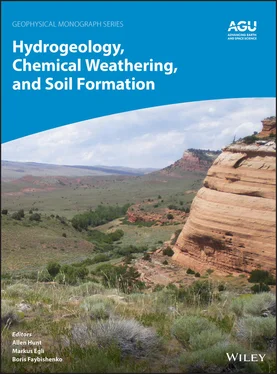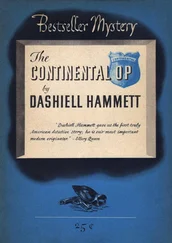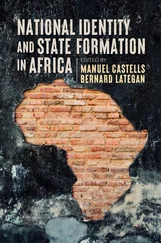Ideas about soil have a long and rich history. It is perhaps easy to dismiss older notions as outmoded, but the foundations of soil science laid down by the creators of the subject still have currency, even though later thinkers have refined them and added new elements. Expanding a metaphor, if Isaac Newton could see further by standing on the shoulders of giants, then modern soil scientists can see further by standing in the soil pits of their predecessors. This chapter will explore the view taken by Hans Jenny, a veritable giant among soil scientists, that soil may be regarded as a system. Jenny mooted this idea in 1930, but soil concepts developed in the five decades before that date provide an essential background and they will be discussed first, before considering soil as a system, soil as a spatial system, and soil as an interdependent system. The chapter will end with a brief look at prospects for the systems approach in pedology.
In developing ideas about soil and soil formation, Jenny, his predecessors, and later researchers have put forward various models that attempt to explain the structure and function of soil systems and their component parts. Table 1.1summarizes some of these models and serves as a guide for the discussion that follows.
1.2. SOIL AS AN INDEPENDENT BODY
As a discipline in its own right, soil science emerged and flowered during the second half of the nineteenth century when a few researchers proposed the idea of soil as an independent entity (Brevik & Cerdà, 2016). This radical idea was presaged by Friedrich Albert Fallou (1862), who argued that soil was distinct from the underlying geology, and who also coined the term pedology . Arguably, Eugene Woldemar Hilgard recognized the independent nature of soil in his Report on the Geology and Agriculture of Mississippi published in 1860 (Jenny, 1961b). But it is undeniably the case that modern soil science was born in the early 1880s when Dokuchaev published his Russian Chernozem in 1883.
Table 1.1 Soil models with selected examples.
Source . Partly inspired by discussion in Hoosbeek and Bryant (1992) and discussion and tables in Minasny et al. (2008).
| Subject of Model |
Type of Model |
| Qualitative |
Quantitative |
| Conceptual |
Statistical and Empirical |
Deterministic |
| Soil as an independent system |
| System drivers (state factors) |
Dokuchaev (1899) Zakharov (1927) Shaw (1930) Jenny’s (1941) CLORPT equation Wilde (1946) Stephens (1947) Major (1951) Lin (2011) |
Climofunctions, biofunctions, topofunctions, lithofunctions, chronofunctions (Jenny 1946, 1958, 1980) Yaalon (1975) Birkeland (1999) |
Kline (1973) Huggett’s (1991, 1995) BRASH equation Phillips (1993a, 1993b, 1998) |
| Energy as a system driver |
Runge (1973) Lin (2011) |
Volobuyev (1963) Rasmussen et al. (2005) Rasmussen and Tabor (2007) Rasmussen et al. (2015) Shepard et al. (2017) |
Regan (1977) Quijano and Lin (2014) |
| Soil as a spatial system |
| 1D soil profile |
Simonson (1959, 1968) Runge (1973) Johnson and Watson‐Stenger (1987) |
Parton et al. (1987) |
Kline (1973) Salvador‐Blanes et al. (2007) Finke and Hutson (2008) |
| 2D hillslope |
Milne (1935a, 1935b) Ruhe and Walker (1968) Conacher and Dalrymple (1977) |
Huggett (1976) Brown et al. (2004) Grealish and Fitzpatrick (2014) Brillante et al. (2017) |
Heimsath et al. (1997) Minsany and McBratney (1999) Yoo et al. (2007) Wackett et al. (2018) |
| 3D landscape |
Ruhe and Walker (1968) Huggett (1975) |
McBratney et al.’s (2003) SCORPAN equation Shepard et al. (2017) Iticha and Takele (2018) |
Ahnert (1967) Huggett (1975) Sommer (2006) Vanwalleghem et al. (2013) |
| Soil as an interdependent system |
| Ecosphere |
Vernadsky (1926, 1929, 1998) Cole (1958) |
|
Huggett (1991, 1995, 1997) Phillips (1993b) |
| Critical zone |
National Research Council (2001) Chorover et al. (2007) |
Banwart et al. (2017) |
Banwart et al. (2017) |
| Biopedology |
Darwin (1881) Johnson (1990) Johnson et al. (2005a) Johnson and Schaetzl (2015) |
Peacock and Fant (2002) Johnson et al. (2005b) |
Saco and Moreno‐de las Heras (2013) Gabet et al. (2014) |
| Geopedology and topopedology |
Zinck et al. (2016) |
Brillante et al. (2017) |
Temme and Vanwalleghem (2016) Willgoose (2018) |
| Hydropedology |
Lin (2003) |
Pereira et al. (2018) |
Ma et al. (2017) |
| Anthropopedology |
Yaalon and Yaron (1966) Amundson and Jenny (1991) |
|
Barton et al. (2016) Leguédois et al. (2016) |
Note . The boundaries between the three types of model are often blurred, with some actual models having characteristics of more than one type; the terms geopedology and so on are explained in Figure 1.2.
1.2.1. Dokuchaev’s Formula for Soil Formation
Vasilii V. Dokuchaev was a Russian geologist turned pedologist who surveyed large stretches of the chernozems underlying the Russian steppes. This work led him to express the view that soil is an independent object and not simply a geological formation; it is a surficial body of mineral and organic substances produced by the combined activity of animals and plants, parent material, climate, and relief (Dokuchaev, 1880, 1883). In taking this view, he rejected the then‐prevalent agrogeological definition of soil, the chemical approach to soil classification, and the agronomic view of soils (Krupenikov, 1992). In their place, he put forward two seminal ideas: (1) that soil is an independent natural body worthy of study in its own right and (2) that five soil‐forming factors determine the course of soil genesis.
Dokuchaev’s original formula for soil formation appeared in an 1899 publication (Florinsky, 2011, 2012; see also Stockman et al., 2011) and read

where П is soil or soil properties, К is climate, О is organisms, Г is parent material, and В is age of the soil. Topography was not included in the expression, most likely owing to a stenographer’s mistake in the original text, in which a discussion of the role of topography preceded the equation (Florinsky, 2012). Using English symbols, Dokuchaev’s equation becomes

This became known as the factorial or state‐factor approach to soil genesis ( Table 1.1).
In 1927, Sergey Zakharov, building on Dokuchaev’s work, presented a general soil formation equation in his textbook on soils. In English, the equation reads
soil = f (parent rock material, plant and animal organisms, climate, age of the terrain, topography)
or using symbols:

1.2.2. Shaw’s Elaboration
Another major elaboration of the state‐factor approach initiated by Dokuchaev was due to Charles F. Shaw (1930). Shaw argued that soils are formed by the modification, and partial decomposition and disintegration, of parent material owing to the action of water, air, temperature change, and organic life. He expressed soil formation according to the formula
Читать дальше















